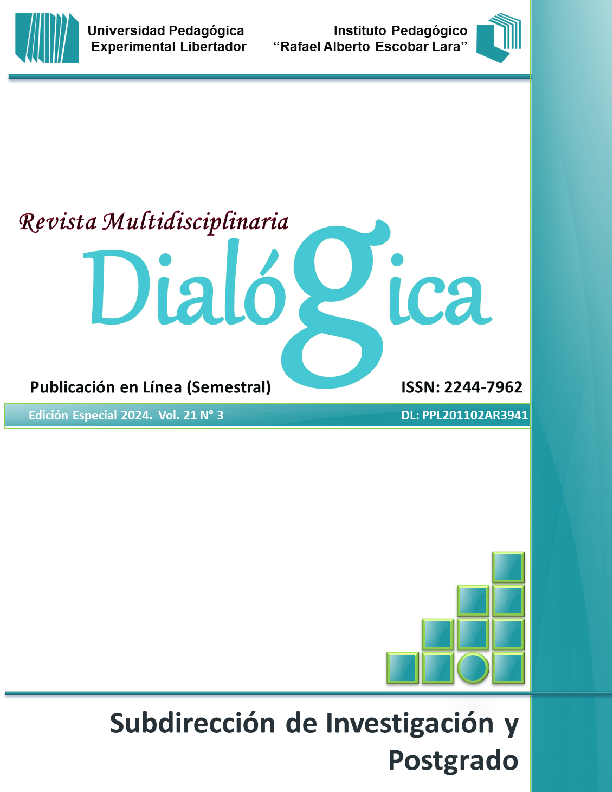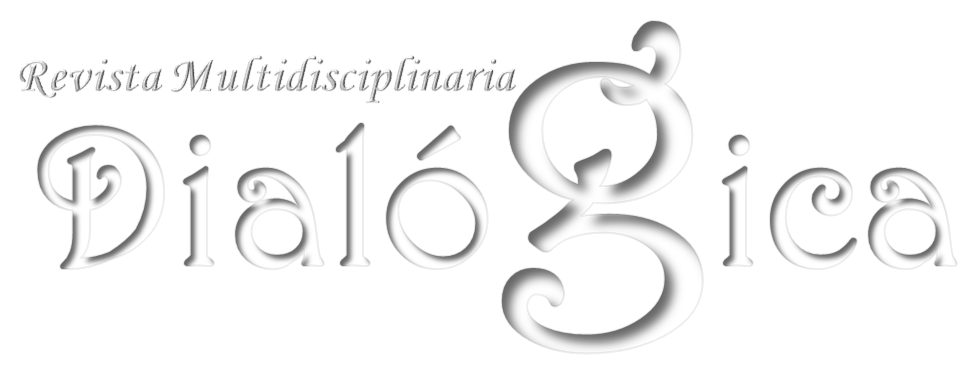DYNAMIC GEOMETRY IN DIGITAL ENVIRONMENT
DOI:
https://doi.org/10.56219/dialgica.v21i3.3295Keywords:
Geometry, digital environment, problem solving, GeoGebra, initial mathematics teacher trainingAbstract
The purpose of the research arises from examining and recognizing the importance of the use of ICT in the teaching and learning of geometry in the professional development of future Mathematics teachers. For this reason, it is intended to design a Curricular Unit for the resolution of Geometric Problems in the Digital Environment. Regarding the theoretical references, the didactics of geometry, the initial training of mathematics teachers, the use of GeoGebra and problem-solving models will be considered. Methodologically it is framed within the socio-critical paradigm, qualitative approach, field work with a view to transformation; of the training of future teachers specializing in mathematics. A discussion group will be held as an information collection technique, and a script of topics or issues of interest will be used as instruments. All students specializing in mathematics at UPEL-Maracay will be considered co-researchers.
References
Blaz, F. E., Castro, W. E., Cenas, F. Y. y Gamboa, L. R. (2021). GeoGebra: herramienta tecnológica para el aprendizaje significativo de las matemáticas en universitarios. Horizontes. Revista de Investigación en Ciencias de la Educación Vol. 5 https://revistahorizontes.org/index.php/revistahorizontes/article/view/181/436 DOI: https://doi.org/10.33996/revistahorizontes.v5i18.181
Castro, M. (2003). El Proyecto de Investigación y su Esquema de Elaboración. (2ª.ed.). Caracas: Uyapal.
Catunta Cuayla, Y. (2015). Aplicación de una metodología usando el software GeoGebra para desarrollar la visualización en el contenido de ecuación de la recta (Tesis de maestría en Educación con Mención en Didáctica de la Enseñanza de las Matemáticas en Educación Secundaria). Universidad de Piura. Facultad de Ciencias de la Educación. Piura, Perú. https://pirhua.udep.edu.pe/bitstream/handle/11042/3668/MAE_EDUC_220.pdf?sequence=2&isAllowed=y
Höffer, A. (1981). Geometry is more than Proof. Mathematics Teacher, 74(1), 11-18. DOI: https://doi.org/10.5951/MT.74.1.0011
Iglesias, M. (2008). Proyecto Docente en el área de Geometría y su Didáctica. Trabajo de Ascenso. UPEL-Maracay
Iglesias, M. y Ortiz, J. (2018). Usos del software de geometría dinámica en la formación inicial de profesores de matemáticas. Matemáticas, Educación y Sociedad, 1(2), 21-35. http://funes.uniandes.edu.co/13824/1/Iglesias2018Usos.pdf
Iglesias, M. y Ortiz, J. (2020). Doblado de papel y Software de Geometría Dinámica. Una experiencia con futuros profesores de matemática. Paradigma, 1017-1045. http://revistaparadigma.online/ojs/index.php/paradigma/article/view/816/822 DOI: https://doi.org/10.37618/PARADIGMA.1011-2251.2020.p1017-1045.id816
Jaime, A. y Gutiérrez, A. (1990). Una propuesta de fundamentación para la enseñanza de la geometría: El modelo de Van Hiele. En Llinares, S.; Sánchez, M. V. Teoría y Práctica de educación matemática, pp. 299 - 384. https://www.uv.es/Angel.Gutierrez/archivos1/textospdf/JaiGut90.pdf
Polya, G. (1965). Cómo plantear y resolver problemas. Trillas.
Schoenfeld, A. (1985). Mathematical Problem Solving. Orlando: Academic Press.
Suárez, Y. (2016). Plan de Formación para Futuros Docentes de Matemática en el manejo de Herramientas Web 2.0. https://www.researchgate.net/publication/332840749_Plan
_de_Formacion_para_Futuros_docente_de_Matematica_en_el_manejo_de_Herramientas_Web_20_UPEL-Maracay_Trabajo_Especial_de_grado
Universidad Pedagógica Experimental Libertador. (2011). Documento base del Currículo UPEL. http://www.upel.edu.ve/wp-content/uploads/2019/02/DOCUMENTO-BASE-.pdf
Downloads
Published
How to Cite
Issue
Section
License
Copyright (c) 2024 César Armas

This work is licensed under a Creative Commons Attribution-NonCommercial-ShareAlike 4.0 International License.


 @revistadialogica
@revistadialogica DialogicaUPEL
DialogicaUPEL RevistaDialogicaUPELMaracay
RevistaDialogicaUPELMaracay dialógicaupel@gmail.com
dialógicaupel@gmail.com dialogicaupel.blogspot.com
dialogicaupel.blogspot.com https://issuu.com/dialogicaupel
https://issuu.com/dialogicaupel https://revistas.upel.edu.ve/index.php/dialogica/
https://revistas.upel.edu.ve/index.php/dialogica/









